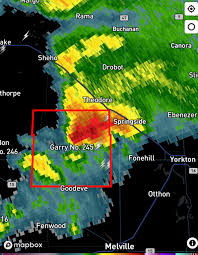
Introduction
Tornadoes pose a significant threat to residents of Saskatchewan, an area known for its severe weather conditions during the summer months. With climate patterns changing, understanding tornado warnings and safety measures has become increasingly vital for protecting communities in the region. The recent increase in tornado activity has prompted meteorologists and emergency services to enhance their warning systems and public awareness campaigns.
Recent Tornado Activity in Saskatchewan
In the past few weeks, Saskatchewan has experienced heightened tornado activity, leading the Environment and Climate Change Canada to issue multiple warnings. On July 14, 2023, a tornado touched down near the city of Regina, causing substantial damage to agricultural structures but fortunately no serious injuries were reported. The twister was part of a severe thunderstorm system that swept across southern Saskatchewan, indicating a turbulent weather season ahead. Meteorologists emphasize the importance of timely warnings, as tornadoes can develop rapidly, sometimes with little advanced notice.
Understanding Tornado Warnings
Tornado warnings in Saskatchewan are categorized into two main alerts: watches and warnings. A tornado watch indicates conditions are favorable for tornado development; residents should remain vigilant and monitor local weather reports. Conversely, a tornado warning means a tornado has been sighted or indicated by radar, requiring immediate action to seek shelter. The Saskatchewan Public Safety Agency recommends having a household emergency plan and a designated safe area, preferably in a basement or an interior room away from windows.
The Role of Technology and Preparedness
Emerging technologies, such as Doppler radar and smartphone alert systems, have improved the ability of meteorologists to detect potential tornadoes earlier. Saskatchewan has invested in these technologies, allowing for better communication during severe weather events. In addition, community preparedness initiatives have increased, with local governments conducting drills and public outreach to educate residents about the risks associated with tornadoes. Local schools and organizations are also encouraged to develop emergency response plans to minimize panic and confusion during an actual tornado.
Conclusion
As the climate continues to change, Saskatchewan’s residents must remain proactive in understanding tornado warnings and safety protocols. The recent uptick in severe weather events highlights the need for vigilance and preparedness among all community members. By staying informed about warning systems and participating in preparedness efforts, Saskatchewan residents can protect themselves and their families, ensuring they are ready to respond in the face of a tornado threat.



